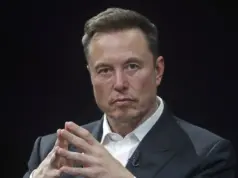Google’s much-hyped autonomous driving vehicles will finally grace the tarmac in Austin, Texas. The search engine giant has picked the city as the next testing location for its self-driving Lexus SUVs, the company announced on Tuesday. And just like in California, Google’s autonomous vehicles will have a human on board, who can take over in case of a mishap.
‘We’ve chosen Austin, Texas, as a new testing location for our project, and one of our Lexus SUVs is there now, with safety drivers aboard, driving a few square miles north and northeast of downtown Austin. It’s important for us to get experience testing our software in different driving environments, traffic patterns and road conditions—so we’re ready to take on Austin’s pedicabs, pickup trucks, and everything in between,’ said Google.
The city of Austin now becomes the second testing ground for Google’s self-driving cars, as the company already has been doing intense testing around the streets of Mountain View, California. Since Google announced this ambitious project in 2010, its robocars have reportedly driven over 10,000 miles, which is ‘ the equivalent of about 75 years of typical American adult driving experience,’ adds Google. Its current fleet consists of modified Lexus RX450h along with Toyota Prius. Austin would be a good place to further test the reliability of these vehicles as they need to get accustomed to different terrains and new driving conditions.
While since the beginning of the project, Google says its cars have been involved in 12 minor accidents, where human being driving other cars have been the cause of the mishap, though no injuries have occurred till now. Google duly notes the challenges and the subtle nuances involved when a machine interacts with humans.
“Even when our software and sensors can detect a sticky situation and take action earlier and faster than an alert human driver, sometimes we won’t be able to overcome the realities of speed and distance; sometimes we’ll get hit just waiting for a light to change,” Chris Urmson, director of the company’s self-driving car program, said in a blog post in May.
It seems a lot of work still needs to be done before this project finally becomes a reality. According to research, 94 percent of accidents are caused by human error, and Google seems adamant to change all that. Meanwhile recently, a close shave between two self-driving cars made headlines, but Google responded by saying that the cars responded as they were programmed.











Comments are closed.